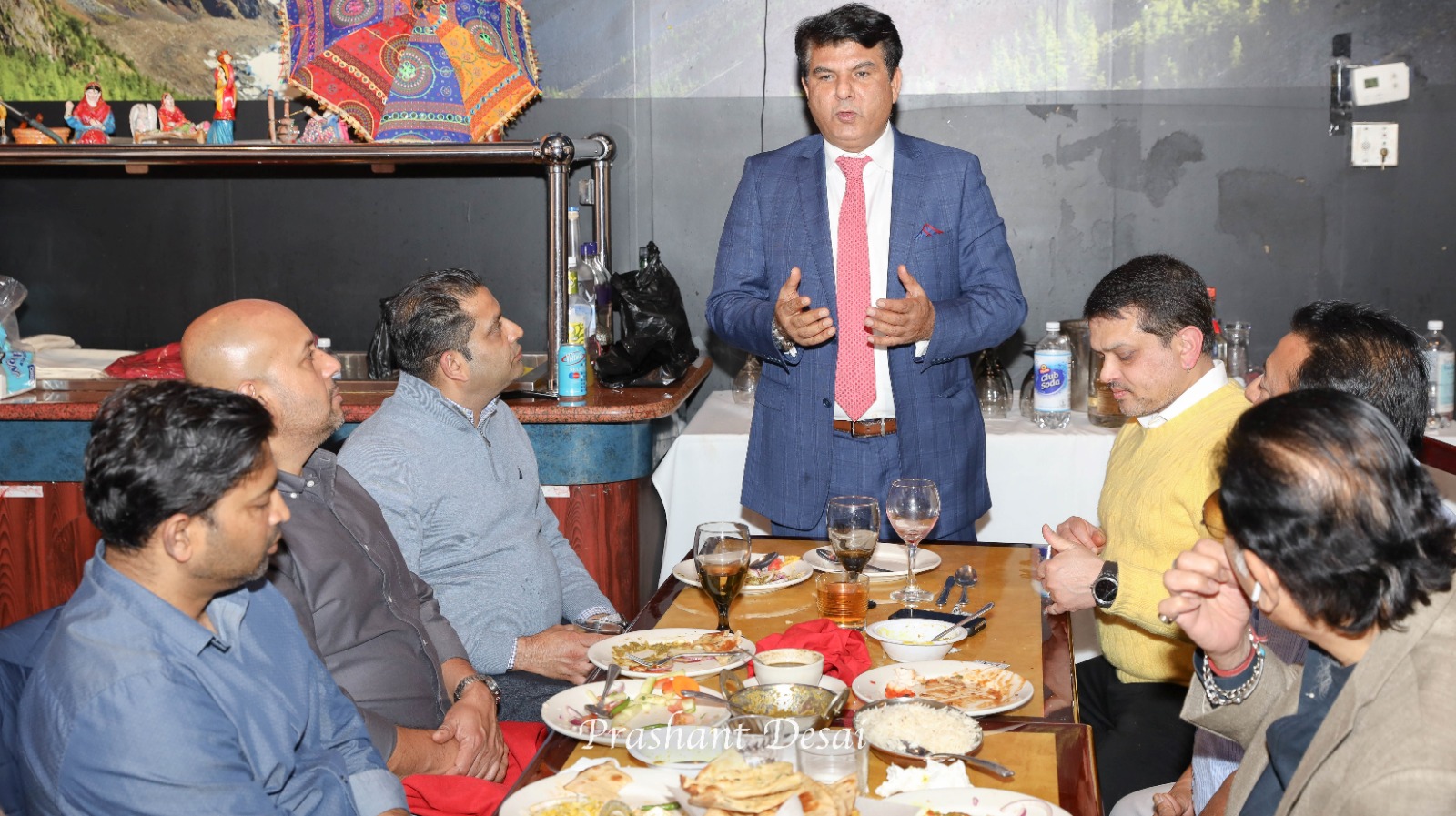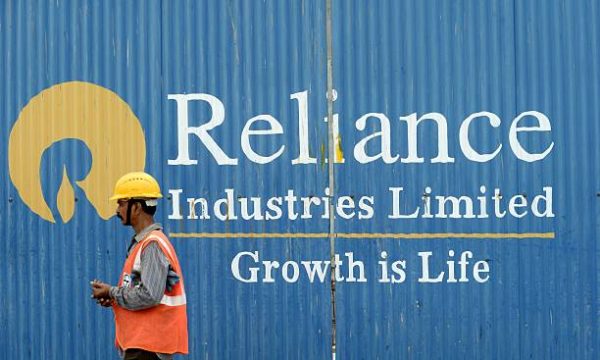The Indian economy grew by 5.4 per cent in the July-September quarter of the current financial year, causing concern in the corporate and business sectors. What is slowing the Indian economy and what is the way out?
Our Bureau
Mumbai/New Delhi
In a warning sign for the country’s economy, the Indian economy grew by 5.4 per cent in real terms in the July-September quarter of the current financial year 2024-25, Ministry of Statistics and Programme Implementation’s official data showed on Friday. The quarterly growth was quite lower than RBI’s forecast of 7 per cent.
Real GDP in Q2 of 2024-25 is estimated at Rs 44.10 lakh crore, against Rs 41.86 lakh crore in Q2 of 2023-24, showing a moderate growth rate of 5.4 per cent. Last year same quarter, India grew 8.1 per cent. Indian economy grew 6.7 per cent in the April-June quarter, lower than RBI’s 7.1 per cent forecast.
The RBI has pegged India’s 2024-25 GDP growth at 7.2 per cent. IMF and World have pegged it at 7.0 per cent. Many global rating agencies and multilateral organizations have also revised their growth forecasts for India upwards.
In its latest monetary policy review meeting in October, RBI pegged Q2 growth forecast at 7.0 per cent; Q3 at 7.4 per cent; and Q4 at 7.4 per cent. Real GDP growth for Q1 of next financial year 2025-26 is projected at 7.3 per cent.
The Economic Survey tabled in Parliament earlier this year “conservatively” projected India’s real GDP growth at 6.5-7 per cent for 2024-25, acknowledging that market expectations are higher. Real GDP growth is the reported economic growth adjusted for inflation.
S&P Global Ratings this Monday retained India’s GDP forecast for the current financial year 2024-25 at 6.8 per cent while cutting economic growth forecasts for the next two years. The Reserve Bank of India last week said that the weakness witnessed in the Indian economy, particularly in the recent quarter, is behind us.
The slack in speed in the Indian economy observed in the second quarter of 2024-25 (July-September) is behind us as private consumption is back to being the driver of domestic demand with festival spending lighting up real activity in October-December, RBI had said in its latest monthly bulletin.
The RBI asserted that the medium-term outlook remains bullish.
India’s GDP grew by an impressive 8.2 per cent during the financial year 2023-24, continuing to be the fastest-growing major economy. The economy grew by 7.2 per cent in 2022-23 and 8.7 per cent in 2021-22.

But now India’s GDP growth has disappointed expectations, with the economy growing by just 5.4 per cent in the July-September quarter of FY2024-25. This slower-than-expected growth has raised concerns among economists, who are now adjusting their projections for the rest of the year.
Upasna Bhardwaj, chief economist at Kotak Mahindra Bank, noted that the sharp dip in GDP growth reflects the disappointing corporate earnings data, particularly in the manufacturing sector, which appears to have faced the brunt of the slowdown.
She said, “The sharply lower-than-expected GDP figures reflect the highly disappointing corporate earnings data. The manufacturing sector appears to have taken the maximum beating. The high-frequency data suggests that festive linked revival in activity may provide a marginally better 2H growth figure, but overall GDP growth for FY25 is going to be around 100bps lower than RBI’s estimate of 7.2 per cent.”
She added, “Despite the sharp slowdown in GDP growth, we maintain our view of a pause by the RBI next week given elevated inflation and an uncertain global environment.”
Sujan Hajra, Chief Economist & Executive Director at Anand Rathi Shares and Stock Brokers, also weighed in on the GDP data, explaining that the 5.4 per cent growth in Q2 fell short of both their own projection (6.7 per cent) and the street’s estimate (6.5 per cent).
He said, “This weakness in the numbers was largely due to discrepancies; net of these, GDP growth remained at a healthy 7.5 per cent. On the production side, weaker growth was observed in the industrial segment, while the services sector, where we had expected 8 per cent growth, recorded a healthy but slightly lower expansion of 7.1 per cent. Agriculture, on the other hand, expanded at a strong pace, as reflected in the advanced estimates for Kharif output.
“While we are not revising our full-year growth projection of 7 per cent thus implying a 7.9 per cent growth in H2, we will closely monitor the momentum going forward. We believe that growth in the second half (H2) will be driven by continued strength in agriculture, which is expected to boost rural demand further and increase in capital expenditure (capex) from both central and state governments. Additionally, moderation in the industrial sector’s base should support stronger growth, especially with the complete monsoon season,” he added
Hajra stated that, however, certain headwinds could impact our outlook. Risks include the potential impact of Chinese imports (“China dumping”) and policy uncertainties following the US elections, both of which could dampen a revival in private sector investment.
Despite the slowdown in Q2, India’s economy grew by 6.7 per cent in Q1, which was also below the RBI’s forecast of 7.1 per cent. As a result, many global rating agencies, including S&P Global Ratings, have revised their growth forecasts for India.
The IMF and World Bank have pegged India’s 2024-25 GDP growth at 7 per cent, while the RBI had earlier forecast a growth of 7.2 per cent.

The RBI remains optimistic about the medium-term outlook, stating that the slowdown observed in the second quarter is behind the economy.
Private consumption, which is expected to drive domestic demand, is showing signs of recovery, bolstered by festive season spending. However, analysts remain cautious, with most projecting that India’s growth will be somewhat lower than initially forecast, given the recent data trends.
Meanwhile, according to a foundation for economic development report, India faces a significant challenge, with 46 per cent of its workforce engaged in agriculture, contributing only 18 per cent to the GDP. Manufacturing stands out as the only sector capable of absorbing unskilled labor at a scale necessary to drive the economy forward.
Jobs in manufacturing and services are 3-6 times more productive than agricultural work, underscoring the sector’s potential to transition the workforce into higher productivity roles.
Industrial clusters, which act as hubs for manufacturing jobs, require more labor than surrounding towns and villages can supply.
However, the lack of adequate worker housing near these clusters has emerged as a key barrier, leading to labor shortages and lower productivity. This shortfall also hampers India’s ability to compete globally in manufacturing exports, limiting job creation and economic growth.
The report highlights that existing worker housing is often informal, consisting of unauthorized slums or substandard settlements that fail to meet the scale and quality needed.
These poor living conditions discourage workers from relocating closer to industrial clusters, perpetuating the labor supply challenge.
Private sector solutions to address this gap are hindered by regulatory obstacles. Inflexible zoning regulations restrict the construction of worker housing, cumbersome building bye-laws inflate costs and delay projects, and high operational charges, including GST and commercial property rates, deter investment.
To address these challenges, the report recommends a series of reforms to unlock manufacturing potential.
It calls for mixed-use zoning regulations to permit worker housing in all zones, simplifying building bye-laws to reduce costs and delays, and exempting worker housing from GST and other commercial property charges.
These measures, the report argues, would make it easier for the private sector to invest in worker housing.
According to an ASSOCHAM-Egrow report, by 2047, domestic manufacturing and services sectors are poised to drive India’s economic transformation, employing 67 per cent of the workforce and contributing over three-quarters of the GDP. The report identifies significant opportunities for businesses in manufacturing, services, and MSMEs (Micro, Small, and Medium Enterprises).
India’s nominal GDP is projected to grow from USD 3.5 trillion in 2023 to USD 22.8 trillion by 2047, with an annual growth rate of 7.5 per cent. The services sector is expected to dominate, increasing its contribution to GDP from 54.2 per cent in 2023 to 60 per cent by 2047.
Manufacturing is set to witness modest growth, accounting for 18 per cent of GDP, while agriculture’s share is projected to decline significantly to 10 per cent. These changes reflect India’s ongoing transition from an agriculture-based economy to one driven by services and manufacturing.
Employment trends also highlight this shift. The services sector is expected to employ 52.3 per cent of the workforce by 2047, compared to just 24.3 per cent in 2000.
In contrast, agriculture’s share of employment is anticipated to drop sharply from 59.4 per cent to 22 per cent. Manufacturing employment is projected to rise from 10.9 per cent in 2023 to 15 per cent in 2047, showcasing opportunities for businesses in industrial growth and technology-driven production.
MSMEs, which currently contribute 30 per cent to GDP and 45 per cent to exports, hold immense potential for growth through formalization, technology adoption, and productivity enhancement.
The government’s emphasis on formalizing the sector creates opportunities in areas like financial services, skill development, and tech integration.
Foreign Direct Investment (FDI) will play a crucial role in India’s economic transformation. With the government focusing on gross fixed capital investment, the continuation of business-friendly policies and incentives is expected to attract foreign investors.


























